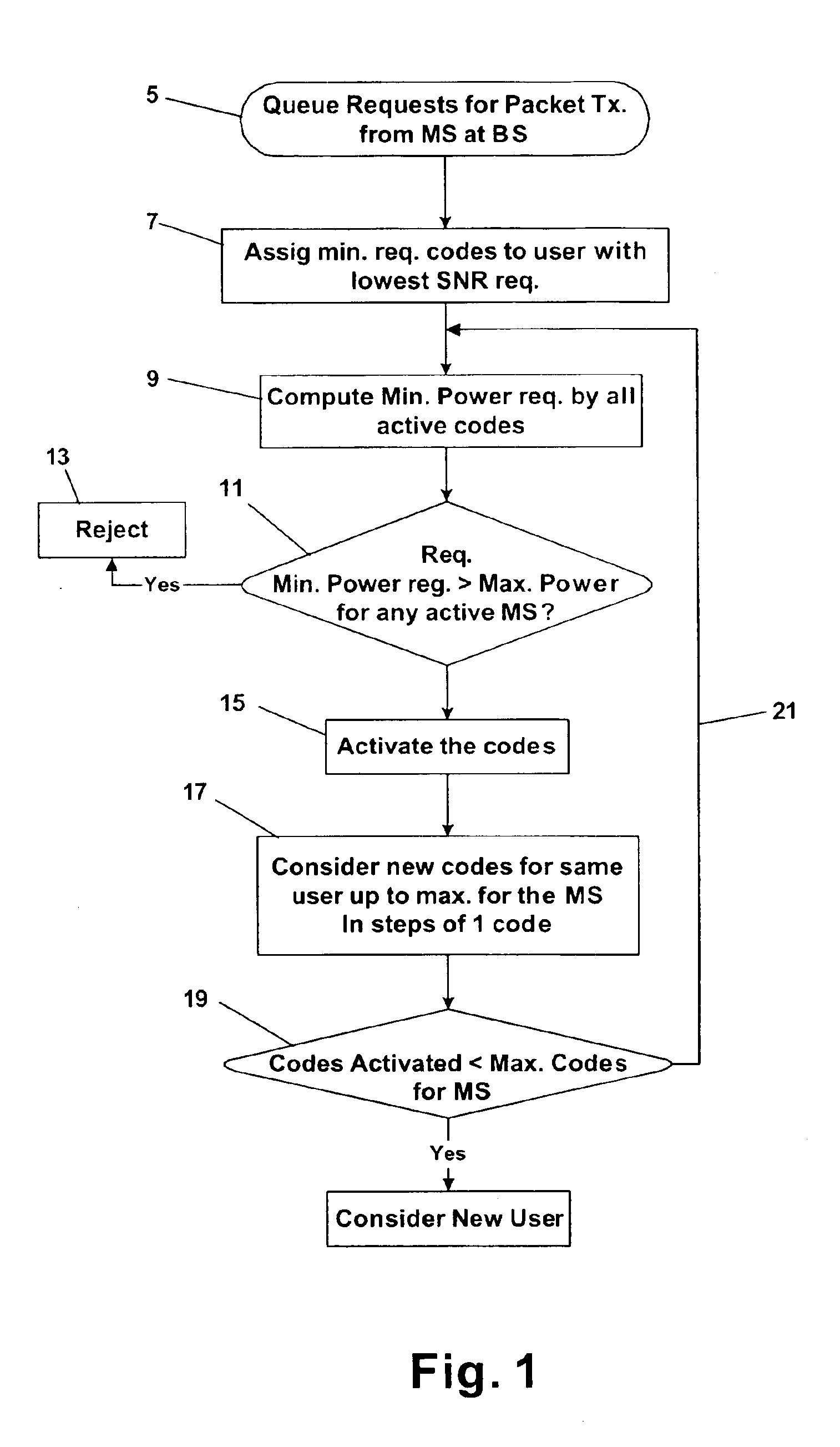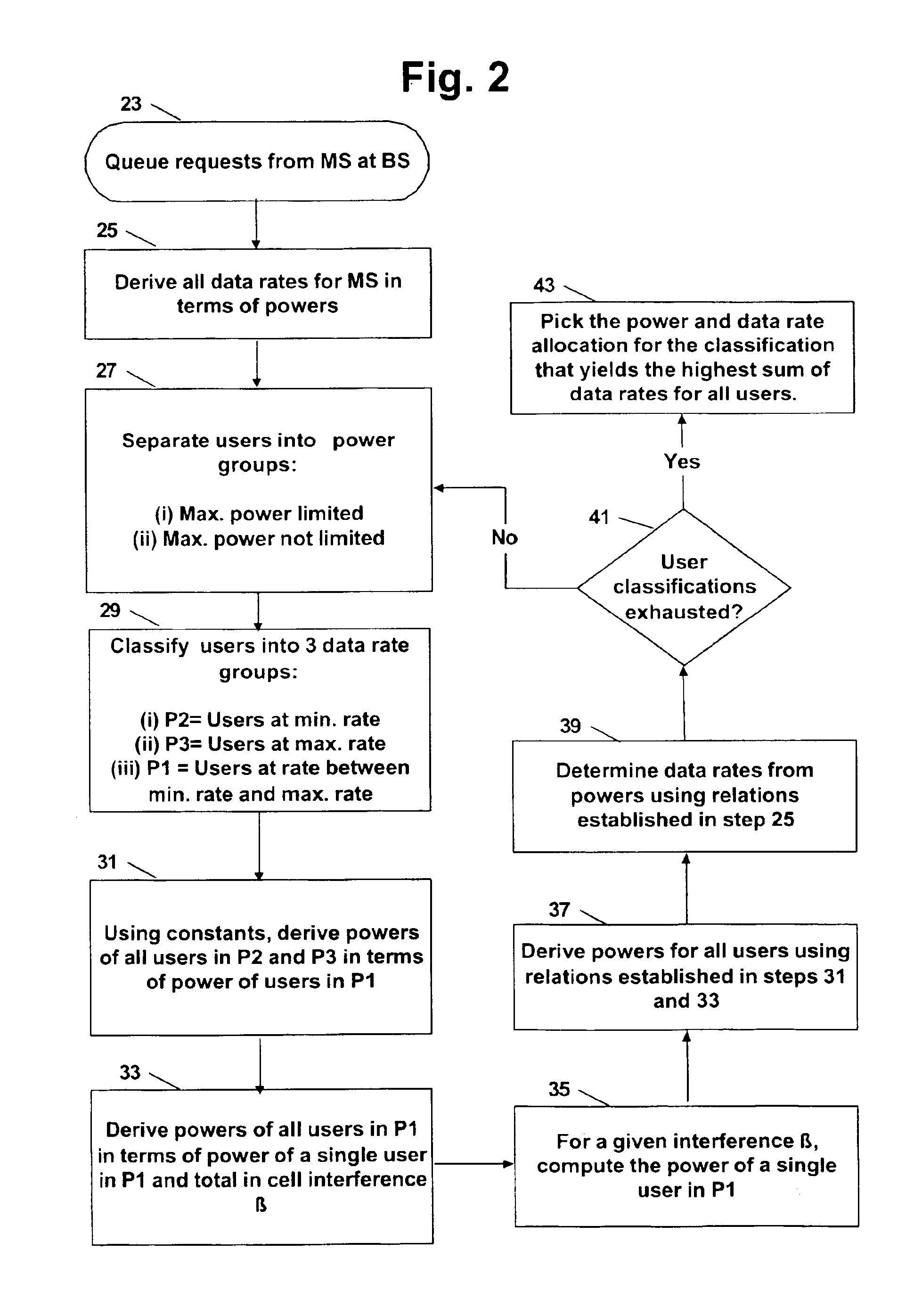Power control based admission methods for maximum throughput in DS-CDMA networks with multi-media traffic
a technology of power control and multimedia traffic, applied in power management, wireless communication, digital transmission, etc., can solve the problems of complex admission procedure of vg-cdma, limited overall power allocation available for each potential, and inability to control the overall power allocation of each potential, so as to achieve the same processing gain, simplify the effect of the admission process and simplify the variable gain procedur
- Summary
- Abstract
- Description
- Claims
- Application Information
AI Technical Summary
Benefits of technology
Problems solved by technology
Method used
Image
Examples
Embodiment Construction
[0017]Efficient bandwidth utilization is necessary to provide multi-media services on a cellular CDMA platform. In a CDMA environment, the resources of the users that can be controlled to provide the most efficient bandwidth utilization are the transmit powers and the data rates.
[0018]The most important attribute of the multi-code MC-CDMA system is that the data rate and hence the processing gain of each code is the same. Users attain higher data rates by using multiple codes simultaneously. The Frame Error Rate of the users is dependent on the received bit energy to noise power ratio Eb / N0. Frame Error Rate is a measure of errors made in transmitting between a mobile unit and a base station while the received bit energy to noise power ratio is the signal to noise ratio necessary for two way communication. Therefore, an admission policy must ensure that the received Eb / N0 for all user codes that are activated, is above a required threshold. In the following, “activation” of a code m...
PUM
 Login to View More
Login to View More Abstract
Description
Claims
Application Information
 Login to View More
Login to View More - R&D
- Intellectual Property
- Life Sciences
- Materials
- Tech Scout
- Unparalleled Data Quality
- Higher Quality Content
- 60% Fewer Hallucinations
Browse by: Latest US Patents, China's latest patents, Technical Efficacy Thesaurus, Application Domain, Technology Topic, Popular Technical Reports.
© 2025 PatSnap. All rights reserved.Legal|Privacy policy|Modern Slavery Act Transparency Statement|Sitemap|About US| Contact US: help@patsnap.com



